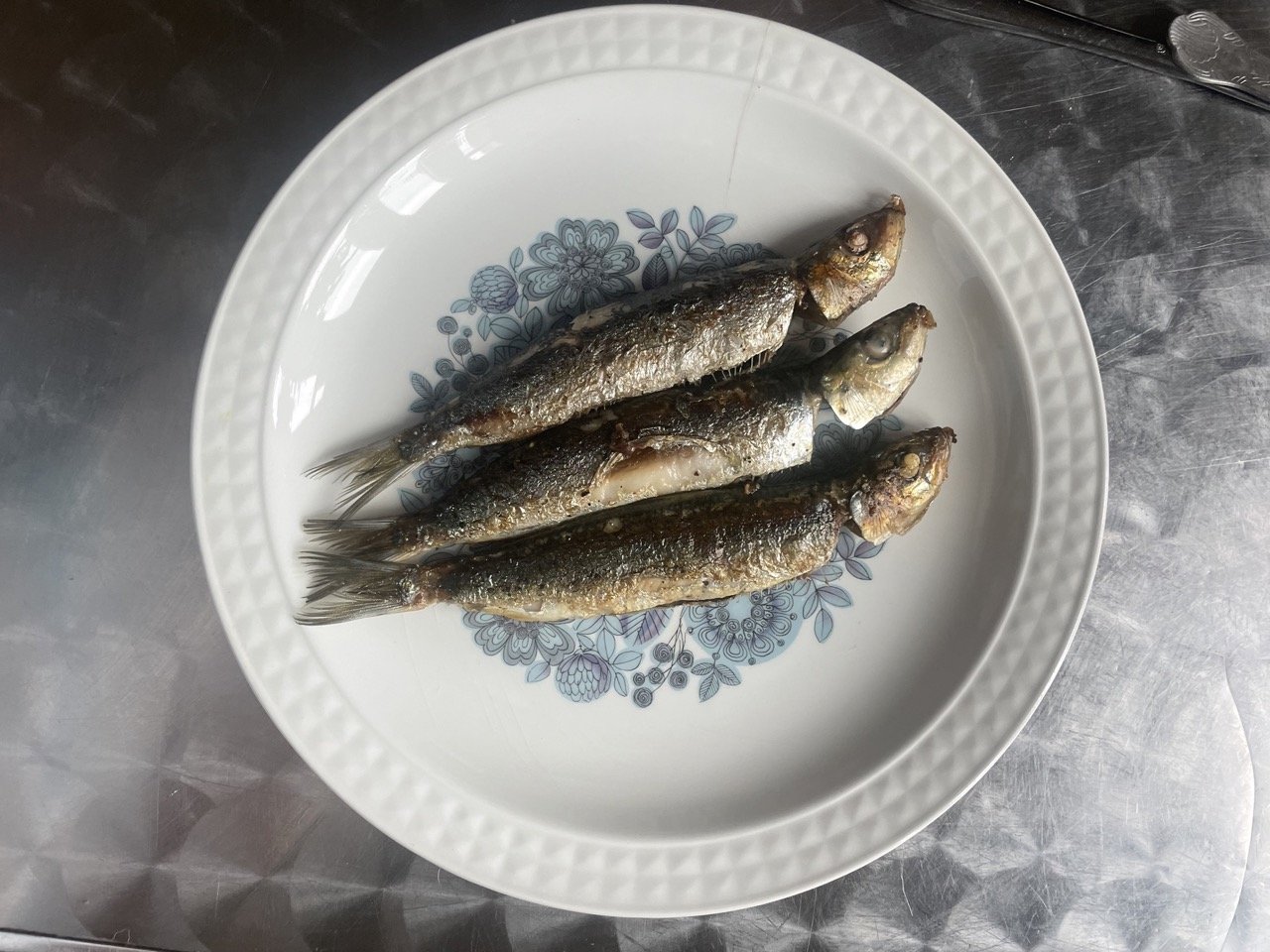
SARDINE
Home | Fish & Recipes | Sardine
Artwork by Lucie Galand
Sardina pilchardus
Biology
Sardines, like herring, are pelagic nomads. They follow swarms of plankton, swimming in great shoals, mouths open. Plankton distribution is affected by currents and sea temperatures, which unlike 100 years ago, are growing more erratic every year. Shoals provide safety in numbers, they're low down on the food chain (which make them a sustainable choice), but also means pretty much every animal in the sea is out to get them- other fish, birds, even whales.
Fishing
Cornish sardines (or pilchards) were the mainstay of the local economy for centuries. They were importing packed salted pilchards to the Med in the 1600s. Overfishing and a decline in the the consumption of salted fish took their toll. However, the Cornish sardine fishery is still healthy and well managed and probably where your grilled sardines came from, even if you were eating them on a Greek island.
They’re caught using drift nets or small ring nets in the late summer.
Eating
The best thing to do with sardines is grill them, either on the barbecue or under a hot grill if you don’t have one. The skin should crisp and blacken. A squeeze of lemon, then pick them up with your fingers and tease the meat from the bones with your teeth. Wash down with plenty of white wine.
Anything else would be sacrilege. Still, there are some sacrelicious recipes you're welcome to try...
The best sardines we ever had were in Portugal. They were grilled with the guts in to keep them extra juicy. Amazing.
Recipes
(Click to enlarge)


